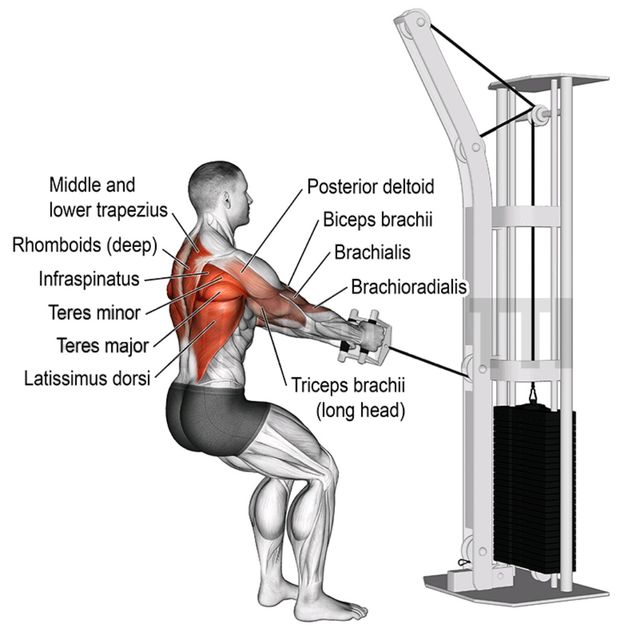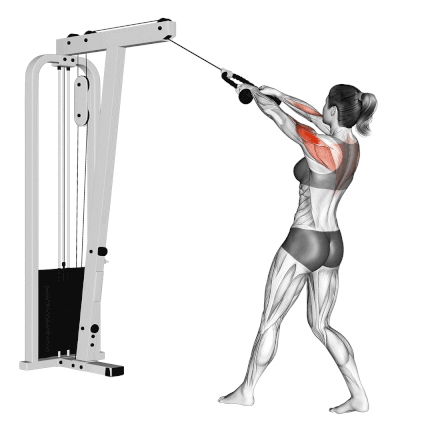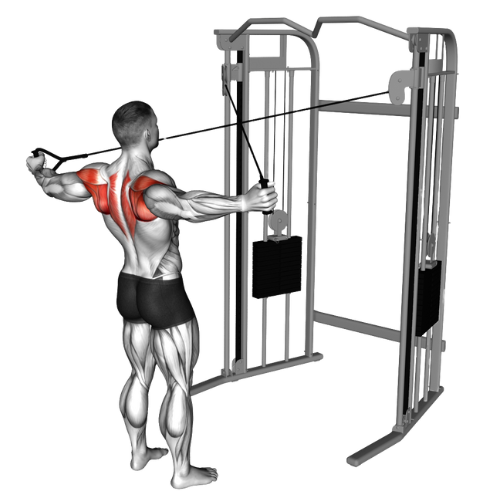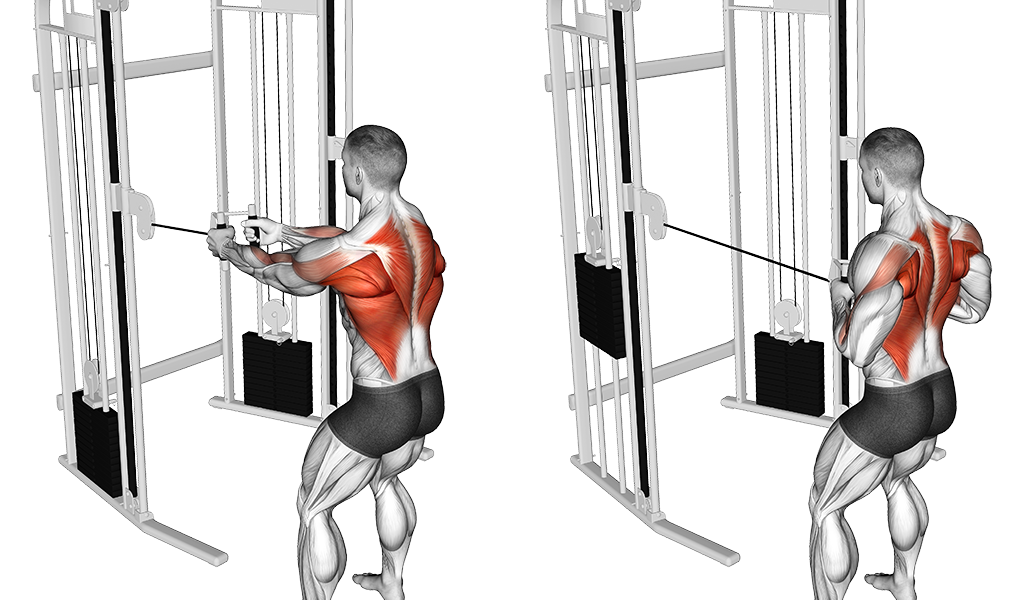The standing cable row isn’t just another back exercise. It’s your secret weapon for building real-world strength and fixing that slumped desk posture. I use it daily with athletes and everyday lifters because it forces your entire body to work as one unit—torching your lats, rear delts, and traps while hammering core stability most seated rows ignore. Forget just looking strong; this move makes you functionally unstoppable. Ready to row like your back depends on it? Let’s dive in.
1. Standing Cable Row Muscles Worked

- Lats (Latissimus Dorsi): Your powerhouse “wing” muscles. They’re the primary drivers pulling the handle towards your body.
- Deltoids (Rear Delts): Those often-neglected muscles at the back of your shoulders get hammered beautifully here. Strong rear delts are non-negotiable for shoulder health and that rounded, 3D look.
- Traps (Trapezius – Middle & Lower): Forget just shrugs. The standing row, especially when you focus on squeezing your shoulder blades down and back at the peak, hits the middle and lower traps hard. This is crucial for scapular stability and pulling your shoulders back where they belong.
- Rhomboids: Nestled between your shoulder blades, these unsung heroes are key retractors. They work hand-in-hand with the traps to pull your shoulder blades together, strengthening your upper back and combating that forward hunch.
2. How to Do a Standing Cable Row

- Set Up Tight
- Cable at waist height, V-handle or straight bar.
- Grab handle, step back until cable is taut.
- Feet hip-width, knees slightly bent.
- Lean 10° forward from hips – back straight, chest up, core BRACED.
- Pull & Crush
- Drive ELBOWS back.
- Squeeze shoulder blades together like crushing a pencil.
- Pull handle to lower abs – pause 1 sec.
- Control Back
- Slowly extend arms (3-sec count).
- Keep chest up, shoulders back.
- Reset when arms are straight. Repeat.
3. Standing Cbale Row vs. Seated Cable Row


| Feature | Standing Cable Row | Seated Cable Row |
|---|---|---|
| Body Position | Feet planted, slight forward lean (hips), no support | Seated, chest braced against pad, torso supported |
| Core Activation | ✅✅✅ CRITICAL (anti-rotation, stability) | ❌ Minimal (pad does the work) |
| Back Muscle Focus | Lats, rear delts, traps, rhomboids + SCAP CONTROL | Lats, mid-back (great isolation) |
| Functional Carryover | ✅✅✅ HIGH (pulling, grappling, posture) | ⚠️ LOW (isolated movement) |
| Range of Motion | Larger (hip hinge allows full scap retraction) | Controlled but limited by pad |
| Injury Risk | ⚠️ Requires strict form (low back if leaning wrong) | ✅ Lower risk (supported) |
| Best For | Functional strength, athletes, posture correction, core integration | Hypertrophy (muscle growth), strict isolation, lift heavy |
Don’t choose just one – use both! They complement each other brilliantly. However, if I had to pick the most functional and versatile option, the Standing Cable Row wins for me hands down. The core stability, the integrated strength, the athletic carryover – it builds a back that works powerfully in the real world. I use seated rows for pure hypertrophy phases or with clients needing strict isolation due to limitations, but standing rows are almost always in the program somewhere. Seeing a client finally “get” the standing row and feel that powerful, stable back engagement? That’s coaching gold.
Welcome! I’m Jordan Mitchell, the dedicated editor at Leadman Fitness, where we specialize in manufacturing high-quality bumper plates, barbells, weight machines, kettlebells, and dumbbells. With a passion for fitness and a keen eye for detail, I ensure that our product information is clear, accurate, and engaging for our customers. My role involves collaborating closely with our design and production teams to highlight the innovative features and superior craftsmanship that set Leadman Fitness apart in the industry. Whether you’re a professional athlete or a fitness enthusiast, I’m here to provide you with the information you need to achieve your training goals with our top-of-the-line equipment.
